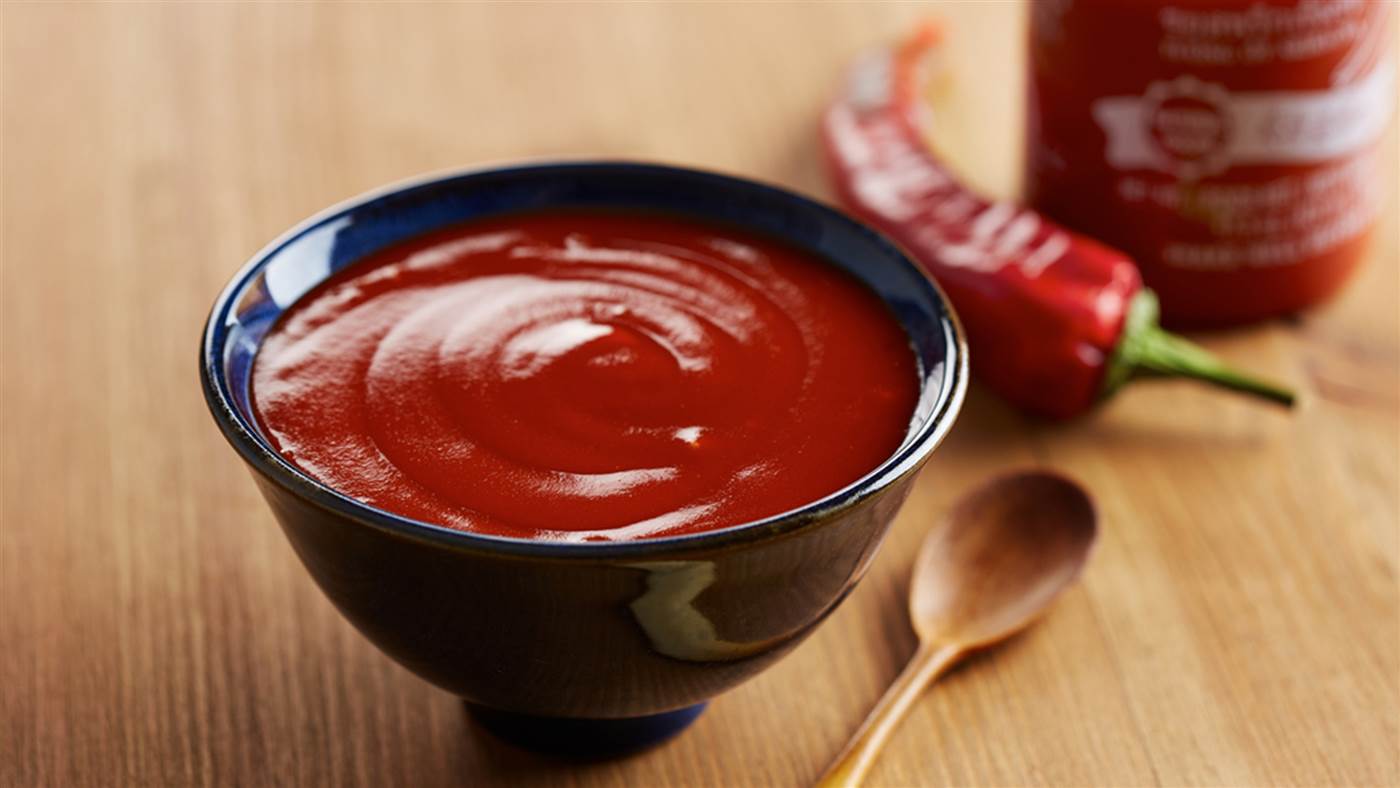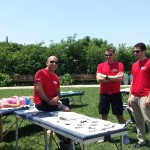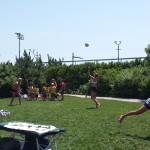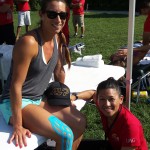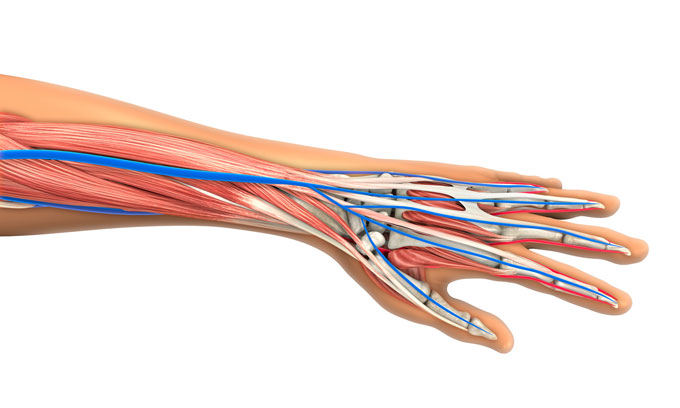About ActiveCare Physical Therapy®
The Best Physical Therapists in NYC
-
Our therapists are licensed in New York State and active members in the American Physical Therapy Association. We have advanced training in joint mobilization and myofascial release techniques.
-
We are dedicated practitioners with a passion for the profession and a comprehensive, holistic approach to treatment and healing. We treat each patient as an individual and treat the whole person, with a plan of care designed to meet the patient’s set goals for health, functionality and a return to work, tasks and activities. We network with a team of physicians, chiropractors, acupuncturists and massage therapists in order to provide guidance to other modalities that may be effective in the patients’ care. We also offer superior Telehealth services for physical therapy.
-
Physical Therapist and owner Dr. Karena Wu PT, DPT, OCS is a graduate of the Program in Physical Therapy at Columbia University and is affiliated with several healthcare organizations in New York City. She is certified as a Strength and Conditioning Specialist, Kinesio Taping Practitioner and Pilates Instructor, and uses SpiderTech Taping. She is also a Certified Orthopedic Manual Therapist, Strength and Conditioning Specialist, Graston Technique Specialist and Pilates Instructor. She holds LSVT BIG, FMS and SFMA Level 1 certifications as well. Dr. Wu also specializes in vertigo and temporomandibular joint disorders.
-
ActiveCare is primarily an out-of-network facility. We accept all insurance with out-of-network benefits and file for most major insurance plans. We work with all prospective patients to create workable payment plans regardless of insurance coverage.
-
ActiveCare accepts Medicare, No-Fault and Workers’ Compensation patients depending on schedule availability.
-
ActiveCare’s administrators provide seamless and efficient concierge-style client service to all of our patients. And the whole ActiveCare team makes sure your time with us is a beneficial, productive and enjoyable experience.
Quick Links
Manual Therapy Bursitis Plantar Fascitis Meniscus Tears Labral Tears Kinesiology Taping Pilates Rehab
Visit Our Main Website:
www.ActiveCarePhysicalTherapy.com
Blog Posts Are Below:
Category Archives: Celebrity PT NYC
Press: Dr. Karena Wu Comments on Kevin Hart’s Back Recovery
Dr. Wu Comments On Kevin Hart’s Back Recovery
Actor Kevin Hart speaks out about his car accident and significant back recovery PT process. The actor was involved in a horrific car crash which required back surgery and subsequent rehab.
US magazine reached out to NYC Celebrity Physical Therapist, Dr. Karena Wu (who did not treat Kevin) to discuss what the actor posted on Instagram. She comments on the modalities and therapeutic exercises that one must go through after spine surgery.
To see the posts, as well as InTouch’s post, click on the links below:
US Magazine
20 Non-Scale Victories That Prove You're Making Weight Loss Progress
Dr. Wu was quoted in Prevention:
20 Non-Scale Victories That Prove You’re Making Weight Loss Progress

NYC Celebrity Physical Therapist Dr. Karena Wu works with clients to recover physical abilities and address other physical issues. Physical therapy also incorporates training in other areas of health and wellness, to include weight loss.
ActiveCare Physical Therapy offers rehabilitation as well as Pilates training, acupuncture and massage therapies to help you achieve your goals. We have a FIT3D body scanner that can help you see what is going on inside as you start your path in recovery or wellness.
To see the victories that prove your success in weight loss, read the full article here.
To make an appointment to come get the FIT3D body scan at ActiveCare Physical Therapy, call or email us today!
ActiveCare Physical Therapy, PC
12 W. 37th Street
Suite 1202
New York, NY 10018
Phone: 212.777.4374
Email: staff@bestptnyc.com
Quoted in Glam.com – Why You Should (Finally) Stop Comparing Your Body To Others
We were quoted in a Glam article!
Why You Should (Finally) Stop Comparing Your Body To Others
 Celebrity Physical Therapist Dr. Karena Wu comments on the health aspect of physical states. Physical Therapists help people recover from injuries but also consider the aesthetic component of each individual. With the addition of our new FIT3D body scanner, ActiveCare PT staff can address your health and wellness therapies to better help you achieve your ideal body.
Celebrity Physical Therapist Dr. Karena Wu comments on the health aspect of physical states. Physical Therapists help people recover from injuries but also consider the aesthetic component of each individual. With the addition of our new FIT3D body scanner, ActiveCare PT staff can address your health and wellness therapies to better help you achieve your ideal body.
To read Dr. Wu’s comments on this, click here.
Full Link: https://www.glam.com/wellness/why-you-should-stop-comparing-your-body-to-others/
Celebrity PT Dr. Karena Wu Speaks at the at Global Congress of Physiotherapy in Dubai
 International Celebrity physical therapist Dr. Karena Wu lectured at the Global Congress of Physiotherapy in Dubai on April 22-23rd. She was honored to give two lectures: Celebrity Physical Therapist expands into India and The Use of Anti-inflammatory Modalities in Musculoskeletal Healing.
International Celebrity physical therapist Dr. Karena Wu lectured at the Global Congress of Physiotherapy in Dubai on April 22-23rd. She was honored to give two lectures: Celebrity Physical Therapist expands into India and The Use of Anti-inflammatory Modalities in Musculoskeletal Healing.
Dr. Wu educated an international crowd of peers in this important topic where physical therapists find themselves more and more in the position of discussion medications with their patients. The medication article was also published in Physiotimes, India’s first physical therapist magazine for physical therapists, from physical therapists.
To see the program details and her publication, click one of the links below:
From low energy to trouble sleeping, here are 6 signs you could be experiencing chronic fatigue
6 signs you could be experiencing chronic fatigue
 We are quoted in Insider in an article about Chronic Fatigue Syndrome:
We are quoted in Insider in an article about Chronic Fatigue Syndrome:
Celebrity Physical Therapist Dr. Karena Wu knows fatigue. When you are in high demand, you can burn your system out. Dr. Wu educates her clients on taking care of themselves so that they can handle their routine or restore their quality of life. It is an important and necessary part of being in the game long term.
To read the article, click here.
Full Article Link: https://www.thisisinsider.com/signs-of-chronic-fatigue-2019-1
——–
If you’re experiencing symptoms of Chronic Fatigue, contact celebrity physical therapist Karena Wu today:
We’re Quoted in Elite Daily: Winter Workouts
6 Little Things That Can Motivate You To Work Out, Even In The Dead Of Winter
It is still chilly outside even though we are halfway through March. Sometimes we get into hibernation mode with the cold temperatures but spring is right around the corner. Keeping yourself motivated to work out can be a task but this article discusses six little things to do just that. NYC Celebrity Physical Therapist, Dr. Karena Wu comments on one of the tricks to stay motivated to work out. Keeping regular in your workouts helps to stay fit and avoid injuries with yo-yo fitness. To read the article, click here.
ActiveCare Celebrity Patient Testimonials
John Stossel comes to ActiveCare Physical Therapy for the best care for his body. John is an avid volleyball player and just discussed his social media comments with Karena Wu, physical therapist and owner of ActiveCare PT. His belief is that investing more in your own healthcare should correlate with better service.
Click here to read the article in the Daily News. To learn more, visit activecarephysicaltherapy.com.
Tips to sprint your way back to exercising in spring
Spring is here, and it’s time to stop hibernating and start exercising more.
Karena Wu, Clinical Director of ActiveCare Physical Therapy and co-author of “Pop-Doc,” has tips to help you sprint your way back to working out and staying healthy. Watch Karena’s appearance on PIX11:
What Workouts To Try When You Need A Break From Your Fitness Routine
As published in Elite Daily.
Ever heard a story about experienced runners having a hip dislocate on a long run? Beginner fitness goers pulling muscles for choosing a demanding workout? Weight lifting lovers getting hunchbacks from solely lifting weights at the gym?
While we all have our chosen workouts, it’s important to try a complimentary workout to give a healthy edge to your fitness routine. For example, if runners are having joint issues, at times they need to switch gears to workouts that are easy on the joints.
If beginning fitness goers are pulling muscles too soon, they need to veer to workouts that allow muscles to heal. If weight lifting lovers are getting hunchbacks, they need to try workouts that help posture.
With that said, we bring in the experts. Physical Therapist Karena Wu and Orthopedic Surgeon Dr. David Neuman, co-authors of the new health book and website “Pop-Doc,” are sharing their input on the popular fitness classes to try that’ll give a healthier edge to your workout routine. They even have some safety tips along the way:
Need something easy on your joints?
Do SoulCycle. Dr. Neuman says,
Cycling does not involve impact forces across the joints, and therefore there are less joint reactive forces across the joints. Less forces across the joints may prolong the life of joints.
Do Pure Barre. Pure Barre is an effective workout that focuses on women’s problem areas: hips, thighs, glutes, abs and arms. Wu says,
Their technique avoids any bouncing or jumping, thereby protecting your joints as your strengthen around them. It’s effective because it strengthens and immediately stretches to create long, lean muscles and avoid the compression in the joint if you don’t stretch after.
If you’re looking for total body exercise that yield the dancer’s long lines, this is the workout for you.
Need something that allows muscles time to heal?
Do Barry’s Bootcamp. Dr. Neuman says,
This group workout offers a unique experience and attempts to change up the workouts daily, so the body can work different muscle groups on different days. This can allow for the other body areas to recover while other areas are getting a workout. Just remember to use proper technique and don’t overdo your workout.
Need something to keep your heart rate up?
Do Orangetheory Fitness. According to Wu,
Orangetheory’s method is that they give you a heart rate monitor to wear at their classes so that the entire class reviews their own performance on a few screens. You see everyone else’s status, which inspires you to keep up with and ‘win’ in the class with your best performance.
Do Zumba. Zumba is another group-oriented workout that focuses on bodily health and wellness, but in this class, you’re dancing your way to the goal line with Latin music. According to Wu,
It’s a cardiovascular workout with a serious element of fun because of the music and dance moves, which means your practice in the class translates to showing off on the dance floor.
So, if you’re looking get your heart pumping, strengthen your limbs and learn some fancy footwork, this is your class.
Need something to help with your posture?
Do hot yoga. Here, you’re surrounded by an intense heat environment that helps with cleansing your body and your internal fluid movement. According to Wu, this fitness class has a lot of static poses, so it requires a lot of stability and balance. Wu also recommends hot yoga over any of the other popular fitness classes because it is more centered on body awareness and posture.
Need something to strengthen your arms and legs?
Do Flywheel. Flywheel is an innovative take on indoor cycling and includes a component of upper body exercises. Dr. Neuman notes that Flywheel can help make your upper body more conditioned, toned and flexible if done in a controlled fashion with the right amount of weight.
With all of the above, Dr. Neuman notes that the danger with any exercise is when you exercise too often during the week, exercise with too much force or weight and exercise without proper technique.
Doing these three things can lead to joint irritation and inflammation, joint swelling, pain stiffness and daily pain. So, above everything else, both Dr. Neuman and Wu stress that you should really listen to your body and take a break when your body gives you the signal.
Click here to read the original article, or visit us online at activecarephysicaltherapy.com to book an appointment.
Celebrating the Launch of Pop-Doc
Karena Wu and the ActiveCare Physical Therapy team joined co-author Dr. David Neuman to celebrate the launch of their new book and website Pop-Doc.com. Check out our pictures from the party:
To learn more about ActiveCare Physical Therapy, visit our website.
Karena Wu Gives The Right Tools To Get Fit on CBS New York
The number one New Year’s resolution is to get healthy and fit. To help you achieve this goal, ActiveCare Physical Therapy’s Karena Wu appeared on CBS New York to share the best tools and tips to help you get in shape in 2016:
To learn more, visit our website at activecarephysicaltherapy.com.
Karena Wu’s Holiday Fitness Gift Guide
Lots of people wait until New Year’s to set fitness goals but you can get a jumpstart by giving the gift of fitness. Watch Karena Wu’s Holiday Fitness Gift Guide on PIX11 News:
Love Wearing Heels? 3 Options That Won’t Destroy Your Body
By Karena Wu, as published on mindbodygreen.
There is such a thing as love at first sight.
Like the first time you saw your now-favorite shoes on the shelf at a store: that whirlwind of ecstasy you felt at having finally found your ideal sole mate. Hearts melt for beautifully crafted heels.
The popular shoes are an iconic symbol for power and sexuality. Stilettos, boots, pumps, wedges … as long as there’s added height, the inner lift will be there, and a more confident you will emerge. Alluring yes, but time for the bad news: one of these days, those heels will walk all over you. As euphoric as leg-lengtheners can be, they come with a painful price.
As a physical therapist, I realize heel lovers are becoming too attached to their feisty footwear, completely disregarding their pain probability. It’s become my mission to educate women on the dangers of heels and eliminate their pain as much as possible.
My hope is you’ll read these six potential high heel issues and change your thoughts on sky high shoes:
1. Achy ankles
When wearing heels, your ankles are vulnerable. They’re not aligned in the most stable position, meaning there’s more movement in the joint. You might as well be auditioning for “Bambi On Ice” while you totter around on heels — that’s how unstable your ankles are.
Platform heels in particular reduce control in the forefoot. This means that movements aren’t as accurate or stable, inevitably leading to more stumbles and falls. Runway models … how do you do it?
2. Unlucky ligaments
There are three ligaments on the outside of your ankle versus five on the inside. This means that even on a level, flat surface, the outer ankle is far more vulnerable and prone to giving out. Now add in the four-plus inches of a skinny heel at an improbable angle … those ligaments are in danger.
3. Crying calves
Adding calf raises to your workout routine is a great way to strengthen your lower leg, but when your calves are permanently raised throughout the day (the position they’re in while wearing heels), they’ll start crying out. Wearing heels leaves our calves in a shortened position, causing the muscle to tighten more and for longer than they should.
4. Cramp crisis
The combination of tight muscles, tight heel cords and loose tendons in the front of the foot means more instability and irritation. If you wear heels, you’re probably all too familiar with charley horses in your legs and foot cramps.
5. Toe troubles
Even though there’s less weight on the forefoot while wearing heels (because of that aforementioned shortened calf), there’s still pressure that can lead to jamming of the toes (in closed-toe heels) or slippage of the toes (in opened-toe heels).
6. Unstable heels
When you walk in regular, flat shoes, your heel hits the pavement first, giving you support and stability. In high shoes your “heel” alone can’t support you because it has such a small surface area, so the rest of your foot has to compensate, often messing up the natural stride and rhythm of your walk.
Teetering in high heels limits natural strides — with more tension all around, the reduced stride length can lead to stiff knees and hips, shortened muscles, tight calves and plantar fascia.
So what’s a heel loving fool to do? Well, I know you don’t want to give up those lovely lengthening shoes altogether, so here are three shoe types that can give you a lift without all the pain:
- Wedge heels: They have a larger surface area, and more support and stability for foot/shoe contact with the ground.
- Platform heels: Platforms that are reasonably high (not five-plus inches!) allow your foot to be less plantar flexed (toes down) because of the raised toe bed. There’s also less weight in the ball of the foot because it’s more evenly distributed throughout the foot.
- Heels with ankle straps: The shoe stays on comfortably, so you don’t have to put in extra effort for balance.
Click here to read the original article, or visit us online at activecarephysicaltherapy.com to book an appointment.
ActiveCare’s Karena Wu Appears on eCareDiary Radio
ActiveCare Physical Therapy’s Karena Wu recently appeared as a featured guest on eCareDiary Radio, discussing physiotherapy in general, as well as how it can help seniors through many conditions. You can listen to the show below:
Any questions? Give us a call at (212) 777-4374 or visit our website at bestptnyc.com.
Spicy food: The pros and cons of added heat in your meal
By Chef Cindi Avila, originally published at Today.com.
Do you slather your food in Sriracha sauce or top everything with Tabasco? If so, a new study from the British Medical Journal says you could actually live longer than those who aren’t putting much “spice” in their life.
A half-million people in China took part in the study and in the end, researchers found those who ate spicy foods as little as twice a week reduced their risk of death by 10 percent.
Up the spicy intake to six times a week and that number increases to 14 percent. Sounds good, right? We thought this might be too good to be true. While we don’t want to rain on your pepper parade, we do want to set the story straight. So here’s the good and bad news.

THE GOOD
Weight Control
New York City gastroenterologist Dr. Prem Chattoo says one of the biggest benefits of eating spicy food (especially jalapenos, habaneros and cayenne) comes from capsaicin.
This “natural chemical speeds up the metabolism by increasing heart rate and body temperature,” according to Dr. Chattoo. Nutritional health counselor Cindy Kasindorf, co-founder of Joni Juice, points out, “the best time to eat spicy food is with a heavier meal during lunch or dinner. It will stimulate the digestive tract.”
Fountain of Youth
The study found eating spicy food could help you live longer. But what about looking younger?
Dr. Chattoo says spicy food can “slow down the aging process by increasing blood flow to the face and body. This makes skin look and feel more youthful.” Kasindorf adds, “I believe any foods that help with the inside of your body will make you look better on the outside.”
Healing
Kasindorf started Joni Juice as a way to help her clients and colicky kids manage certain health issues. She makes it a point of adding some spicy elements to several of the company’s juices. One reason? “Spicy foods are an excellent way to relieve sinus congestion and open up the breathing airway.”
According to Dr. Chattoo, spicy food “not only helps people with sinus conditions potentially decrease their symptoms, but it also helps increase blood flow and overall circulation which improves healing properties.”
Vegan food expert Pamela Elizabeth, the restaurateur behind Blossom and Blossom Du Jour restaurants, crafts much of her menus based on health properties.
Vegan food in particular is known for its spices and Elizabeth says there’s a good reason for that.
“For centuries, chili peppers have been noted as being medicinal. Since they are chock full of vitamins like A and C, they can help boost the immune system and even fight the common cold.”
Heart Helper
Dr. Chattoo says “spicy food acts as an antioxidant and blood thinner, which aids in heart disease by improving cardiac blood vessel strength.” Talk about heart healthy!
Anti-inflammatory
Physical therapist Karena Wu from ActiveCare Physical Therapy says her favorite side effect from spicy food is its anti-inflammatory properties. Wu not only treats patients for arthritis, but is a rheumatoid arthritis sufferer as well.
She is glad spicy food can “help with pain and healing by increasing blood flow to an affected area.” Mark Bailey, who is a private chef in New York City knows this first hand.
“My grandmother loved making Escovitch fish because the scotch bonnet peppers she believed helped relieve the pain of her arthritis. Capsaicin is the active ingredient in scotch bonnet peppers and it’s known to fight inflammation. So I definitely keep this in mind when cooking for my own parents now.”
This can be also be good for people with auto immune diseases, Parkinson’s and even asthma sufferers. Dr. Chattoo suggests “finding spicy foods with the highest concentration of capsaicin is key. For example, raw chopped peppers would be very high in capsaicin and potentially the most beneficial.”
Anti-bacterial
Who knew spicy food can actually kill stomach bacteria? Dr. Chattoo says this is a big benefit as the peppers help prevent further infections throughout the body.
Temperature Regulation
Elizabeth says one of the most interesting things about spicy food is that “it can heat up your body when it’s cold out and, surprisingly, can cool your body off when you are hot. Eating spicy food makes you sweat and sweating actually helps your body temperature regulate itself. So while it may seem strange, definitely put more heat on your food when the heat is on.”
THE BAD
Irritant
Dr. Chattoo says while capsaicin has benefits, it also has some downsides. “Capsaicin can be a very potent irritant. It can cause damage to the lining in the stomach, which in turn can cause gastritis, stomach ulcers and even intestinal disease such as colitis.” Ouch!
A Bad Burn
You may like the burning sensation spicy food has on your tongue, but the flipside to that is “spicy food can also cause heartburn and/or reflux disease. The reason being: its acidic and irritant properties can cause a rather unwanted effect once it hits your insides.”
If you experience any of these conditions after eating spicy food, Dr. Chattoo says you should consider “adding a side of cream or yogurt to your dish. This may help protect the digestive system by neutralizing the burning potential and temper the irritant properties that can cause harm.”
Kasindorf also says that when paired with a cooked or raw vegetable, you’ll lessen the burn.
Dr. Sean Lager from Gotham City Orthopedics takes a different approach saying, “If spicy food causes indigestion or GERD (gastro-esophageal reflux) then it is best to avoid such foods. If one insists on eating foods with lots of heat then they need to take a Zantac or Prilosec before hand.”
Taste”less”
While you may think spicy food is enhancing the taste of your food, Dr. Chattoo has to be a bit of a Debbie Downer here because he says the fact is “spicy foods can also cause damage to the taste buds hampering your sense of taste.”
This might be the reason why over time you feel like you can turn up the heat even more on your favorite foods — or explain why you can eat the Buffalo wings with the “too hot to handle” sauce.
The Unspeakable
You probably won’t want to tell your friends if you suffer from this spicy side effect, especially not while eating!
Dr. Chattoo says spicy food can “worsen hemorrhoids by causing further damage and irritation.” He says it can also make IBS (irritable bowel syndrome) worse, and even potentially cause diarrhea. Not fun.
Eye-yi-yi
If you’ve ever chopped peppers at home you may know about this unwanted side effect. You are chopping and seeding when all of the sudden you rub your eye.
Kasindorf points out that “you should be careful not to touch your eyes if handling anything spicy and you may not realize it, but even after hand washing it may still be on your skin. To be safe you may want to wear gloves and take them off and discard them immediately after preparing the pepper.”
“Pegan” – The Diet of the Moment
By Chef Cindi Avila, originally published at thedailymeal.com
Anyone who knows me knows that I am a vegetarian. I, myself, don’t eat meat, but I am also not one to preach about what others eat and right now lots of people seem to be eating the so-called “pegan” diet. Pegan is a word, and way of eating, that blends vegan food with food in the paleo diet. It actually recommends about 75% fruits and veggies and 25% lean animal proteins. It says no to dairy and carbs. It’s no secret I’m not a fan of the paleo diet. Since we live in modern times with access to modern food and modern medicine why eat like a caveman? However I found a few things interesting about the pegan diet so I decided to talk to a group of experts to find out their thoughts.
THE GASTROENTEROLOGIST
First up is NYC Gastroenterologist Dr. Prem Chattoo of Hudson River Gastroenterology. He is a fan and has actually recommended the diet to several patients. Here’s our exchange: Have you tried the pegan diet? If so, what benefits came from it? Yes. I decided to try the pegan diet last year when I felt like I was plateauing on the South Beach Diet. There are multiple benefits. In my case, I felt that I needed to incorporate more fruits and vegetables into my diet because, although I was managing my weight with a low glycemic diet, it tended to be very meat/protein centered. I believe that the pegan diet is worth trying because it strikes what seems to be the perfect meat/protein to fruits/vegetable balance. What are your favorite types of vegetables to integrate into your diet? My favorite pegan veggies are portobello mushrooms, artichokes, eggplants and kale. These tend to be my favorites because while they are very filling they are also low in starch and glycemic index so they do not spike your blood sugar. What are your favorite types of meats to integrate into your diet? Why are these your favorite? Shredded chicken breast, grass fed beef, and salmon.
Keep in mind, that in the pegan diet, meat is supposed to be integrated as more of a side dish/condiment and these meats are my favorite because they tend to work really well in that role. The portion size should be no larger than the size of your palm. What do you think is the hardest part about eliminating sugars and carbs from your diet? The hardest part about eliminating sugars and carbs is that because sugars and carbs are in readily available and hidden in many processed food items, our bodies have been conditioned over time to crave them. The role of the pegan diet is to reverse and retrain the body to function without sugars and processed carbs. Are there any bodily changes that occur from going paleo to pegan or vegan to pegan? There may be some. Going from paleo to pegan may improve overall cholesterol levels. Going from vegan to pegan may increase your vitamin B12 levels which increase energy levels. What do you think is the best choice of diet? Paleo, vegan or pegan? Pegan, because having fruits and vegetables as 75% of your daily food intake is likely to reduce the daily caloric intake of many of us and the pegan diet integrates a wonderful balance between meat and fruits/veggies.
THE NUTRITIONAL HEALTH COUNSELOR
Next on my list of experts is Nutritional Health Counselor Cindy Kasindorf, founder of Joni Juice. What’s interesting is she says some people, including herself may have the name pegan all along. Here’s my conversation with Cindy: Have you tried the pegan diet? If so, what benefits came from it? Why is it worth trying? Interestingly enough, I lived by the pegan diet before even knowing that there was a title to this method of eating. Many studies have shown that we are much better off eating mostly a plant based diet and eliminating dairy, soy, sugar and processed foods. With a pegan diet, you are eating 75% plant food and there is also room for high quality lean animal protein and healthy fats such as avocado and olive oil. Some of us do best when having some high quality animal protein in our diet. Filling your plate with mostly vegetables and a smaller portion of lean animal protein is a great way to combine food so that it is easily digested and provides both the macro and micro nutrients. It also allows for a diet which is less restrictive so that there are more options and it is easier to stick with it. What are your favorite types of vegetables to integrate into your diet? Why are these your favorite? All green and cruciferous vegetables such as broccoli, brussels sprouts, kale, spinach, cauliflower and cabbage. Studies have shown that Cruciferous vegetables can help prevent cancer. I also love beet, asparagus, squash, and artichoke. What do you think is the hardest part about eliminating carbs and dairy from your diet? I think the psychology of it and making that switch is the hardest part. Our culture strongly encourages us to drink lots of milk and eat lots of simple carbs. To replace carbs I recommend quinoa and to replace milk/dairy I suggest almond milk. I also love coconut based ice cream as a splurge treat.
THE PHYSICAL THERAPIST
Another interesting side benefit of eating pegan may also have to do with your metabolism, that’s according to Karena Wu, owner of ActiveCare Physical Therapy. Wu, who helps keep everyone from professional athletes to the average gym goer in shape. Wu says, “Eating pegan will help with becoming healthier and more fit because of the lack of ingredients that retain water and ideally because you are enjoying the list of items with minimal flavor additives. It should kick up the metabolism and reduce water and true fat. The diet should also stimulate the digestive and cellular systems more because of the processing required in digestion and bowel movements, from the increase in fiber and energy, from the true, healthy, whole foods that nourish the system.”
THE PRIVATE CHEF
NYC Chef Mark Bailey is also a fan. As a private Chef he noticed some clients requesting a pegan menu. That’s when he decided he would give the diet a shot himself to lose a few pounds. How’d he do it? “I integrated lots of broccoli, green beans and asparagus into my pegan diet. These veggies compliment meat very well and are quite filling,” said Chef Bailey. “For the meats, I ate fish, chicken and turkey because they can be prepared quickly and are lighter than say beef or pork.” Lime and tequila shrimp/chicken kabobs, veggie frittata and fajita lettuce wraps are Chef Bailey’s go-to pegan dishes. THE
VEGAN RESTAURATEUR
So this all sounds great right? Well not so fast. NYC vegan restauranteur Pamela Elizabeth, owner of NYC’s Blossom Du Jour and Blossom on Columbus (among other restaurants that carry the Blossom name) isn’t a big fan. She still believes vegan is best. “I wish the pegan diet did not promote meat consumption and did promote the importance of eating healthy carbs.” Elizabeth goes on to note that “While encouraging people to eliminate dairy from their diet, and promoting the intake of large amounts of vegetables daily is absolutely beneficial. I still stand by the vegan diet 100% though. It isn’t only good for the body, it’s good for the planet and for farm animals.”
THE KING OF FROZEN YOGURT
Going Pegan also means giving up dairy. Many would argue that would mean a lack of calcium and a lack of some of America’s favorite sweet treats including 16 Handles CE-Yo Solomon Choi. Choi says diets like all the ones mentioned here are one of the reasons they are now catering to those who want to eat dairy and those who don’t. They always have two dairy-free options on tap and are even working on new flavors like Strawberry Lemonade Sorbet and a Yo Soy Chocolate flavor, both 100% dairy-free (available late summer/early Fall). Some people still want their dairy too so there are lots of options for everyone.
MY THOUGHTS
The moral of the story is whether you are pegan, paleo or vegan it’s still a personal choice. You know what is right for you and your body, label or not! I personally think the name pegan sounds a little silly, but if like Cindy Kasindorf you already eat this way who needs labels?
Click here to read the original article, or visit us online at activecarephysicaltherapy.com to book an appointment.
Karena Wu & ActiveCare at the AVP New York City Open
Karena Wu, Clinical Director of ActiveCare Physical Therapy and Medical Board Member for AVP, is on duty this weekend, working on the players courtside at the AVP Kingston New York City Open. So far the weather has been beautiful (keeping fingers crossed), and the turnout has been great. Check out the photos we’ve taken so far:
If you’d like to come out to the Pier and watch some exciting beach volleyball action, visit the AVP website to buy tickets. Don’t forget to stop by and say hello to Karena and the team!
ActiveCare at the AVP St. Pete Grand Slam
ActiveCare Physical Therapy‘s Owner and Clinical Director Karena Wu appeared at the AVP Pro Beach Volleyball Tour‘s St. Petersburg event. This event was an FIVB smart St. Pete Grand Slam hosted by the AVP. The event took place on June 15th-21st. Karena works on the medical board of the AVP and was on hand to provide physical therapy for the professional volleyball players before, during and after the matches. Check out our pictures from the event below, and be sure to visit our website to get in touch with our team of physical therapists.
The Dangers of Overused Wrists
By Karena Wu, as published in Total Food Service.
Spring is here and we are outdoors enjoying our food and beverages on NYC streets. We are enjoying gustatory pleasures in addition to the olfactory and tactile pleasures of spring.
Everything is alive! People are usually more active outdoors or just visibly so. Some might be increasing their activity level because it is spring but for others, their activity level might be remaining the same or even lesser. In the bar and restaurant industry, oftentimes the job is secondary to a desire to become an established actress or musician, which can mean increased stress on multiple body parts.
I met a bartender named Katerina at Flinders Lane in the East Village. I was enjoying a simple glass of wine but was in awe of the simple manual juice press that she was using to squeeze limes. It consisted of spinning a handle easily until the lime caught between the teeth. Then the handle required overpressure to actually juice the lime. This action required good grip strength in the hand but also strength in the arm all the way up to the shoulder.
Katarina shared with me that she is a dancer and was diagnosed with wrist tendonitis. She has danced on the Evita Tour. She stated that her pain was up the pinky side of the hand and forearm. During dance performances she would have to catch herself from a falling positon and land on her hands on multiple occasions. Then, she would come to work and have to make fresh juice for the cocktails. Using the press would be difficult because of the repetitive nature of the work as well as the stress applied into the forearm and hand.
The wrist is a very small area with many bones, ligaments, nerves and tendons. It allows for dexterity and strength but can also cause great pain and dysfunction. We use our hands for everything. In an industry where prep and great service are required, this can mean job-related pain and potentially time off of work. We always think of Carpal Tunnel Syndrome (CTS) as the wrist tendonitis, but this is not quite true. Wrist tendonitis shares the same symptoms but is technically a different problem. Both are repetitive stress injuries, but wrist tendonitis has as its root cause the tendons that cross the wrist joint. CTS involves compression and inflammation of the median nerve, a different soft tissue.
Symptoms of wrist tendonitis are pain in the wrist and forearm, reduced range of motion, a feeling of tightness or achiness, loss of hand strength and numbness. There will be inflammation and swelling of the tendons around the wrist and the tightness can extend up into the forearm where the muscles of the tendons exist.
Physical Therapy for wrist tendonitis involves reducing the pain, inflammation and tightness. That might mean wearing a wrist splint to minimize the amount of motion in the wrist joint. When you wear a splint, this gives the soft tissues a chance to relax and calm down. Once the pain and inflammation calm down, we would prescribe strength training of the entire upper extremity, with a focus on the elbow, wrist and hand. The stronger the more proximal joint is (the shoulder), the less work the distal joints (elbow, wrist and hand) have to do. There needs to be balance and all need to be as strong and powerful as possible, but you cannot expect a small wrist joint to do what a big shoulder joint can do. The wrist and hand complex is very special and very complicated and requires a delicate balance of mobility, strength and dexterity.
Once strength and flexibility are restored and basic activities of living do not cause pain, you can reintroduce higher intensity activities required in dance or any exercise that requires sustained gripping or hand motions. Rehabilitation exercises are incorporated with work or sport-specific drills to help maintain a pain-free and healthy state. Your hand and wrist will thank you and you can return to the fine motor skills required in service with a smile.
Click here to read the original article, or visit us online at activecarephysicaltherapy.com to book an appointment.
Love Wearing Heels? 3 Options That Won’t Destroy Your Body
By Karena Wu, as published in MindBodyGreen
 There is such a thing as love at first sight.
There is such a thing as love at first sight.
Like the first time you saw your now-favorite shoes on the shelf at a store: that whirlwind of ecstasy you felt at having finally found your ideal sole mate. Hearts melt for beautifully crafted heels.
The popular shoes are an iconic symbol for power and sexuality. Stilettos, boots, pumps, wedges … as long as there’s added height, the inner lift will be there, and a more confident you will emerge. Alluring yes, but time for the bad news: one of these days, those heels will walk all over you. As euphoric as leg-lengtheners can be, they come with a painful price.
As a physical therapist, I realize heel lovers are becoming too attached to their feisty footwear, completely disregarding their pain probability. It’s become my mission to educate women on the dangers of heels and eliminate their pain as much as possible.
My hope is you’ll read these six potential high heel issues and change your thoughts on sky high shoes:

1. Achy ankles
When wearing heels, your ankles are vulnerable. They’re not aligned in the most stable position, meaning there’s more movement in the joint. You might as well be auditioning for “Bambi On Ice” while you totter around on heels — that’s how unstable your ankles are.
Platform heels in particular reduce control in the forefoot. This means that movements aren’t as accurate or stable, inevitably leading to more stumbles and falls. Runway models … how do you do it?
2. Unlucky ligaments
There are three ligaments on the outside of your ankle versus five on the inside. This means that even on a level, flat surface, the outer ankle is far more vulnerable and prone to giving out. Now add in the four-plus inches of a skinny heel at an improbable angle … those ligaments are in danger.
3. Crying calves
Adding calf raises to your workout routine is a great way to strengthen your lower leg, but when your calves are permanently raised throughout the day (the position they’re in while wearing heels), they’ll start crying out. Wearing heels leaves our calves in a shortened position, causing the muscle to tighten more and for longer than they should.
4. Cramp crisis
The combination of tight muscles, tight heel cords and loose tendons in the front of the foot means more instability and irritation. If you wear heels, you’re probably all too familiar with charley horses in your legs and foot cramps.
5. Toe troubles
Even though there’s less weight on the forefoot while wearing heels (because of that aforementioned shortened calf), there’s still pressure that can lead to jamming of the toes (in closed-toe heels) or slippage of the toes (in opened-toe heels).
6. Unstable heels
When you walk in regular, flat shoes, your heel hits the pavement first, giving you support and stability. In high shoes your “heel” alone can’t support you because it has such a small surface area, so the rest of your foot has to compensate, often messing up the natural stride and rhythm of your walk.
Teetering in high heels limits natural strides — with more tension all around, the reduced stride length can lead to stiff knees and hips, shortened muscles, tight calves and plantar fascia.
So what’s a heel loving fool to do? Well, I know you don’t want to give up those lovely lengthening shoes altogether, so here are three shoe types that can give you a lift without all the pain:
- Wedge heels: They have a larger surface area, and more support and stability for foot/shoe contact with the ground.
- Platform heels: Platforms that are reasonably high (not five-plus inches!) allow your foot to be less plantar flexed (toes down) because of the raised toe bed. There’s also less weight in the ball of the foot because it’s more evenly distributed throughout the foot.
- Heels with ankle straps: The shoe stays on comfortably, so you don’t have to put in extra effort for balance.
Click here to read the original article, and to book an appointment, visit www.activecarephysicaltherapy.com.
Photo Credit: Stocksy
 ActiveCare Physical Therapy, PC
ActiveCare Physical Therapy, PC
29 West 38th Street
Suite 601
New York, NY 10018





















